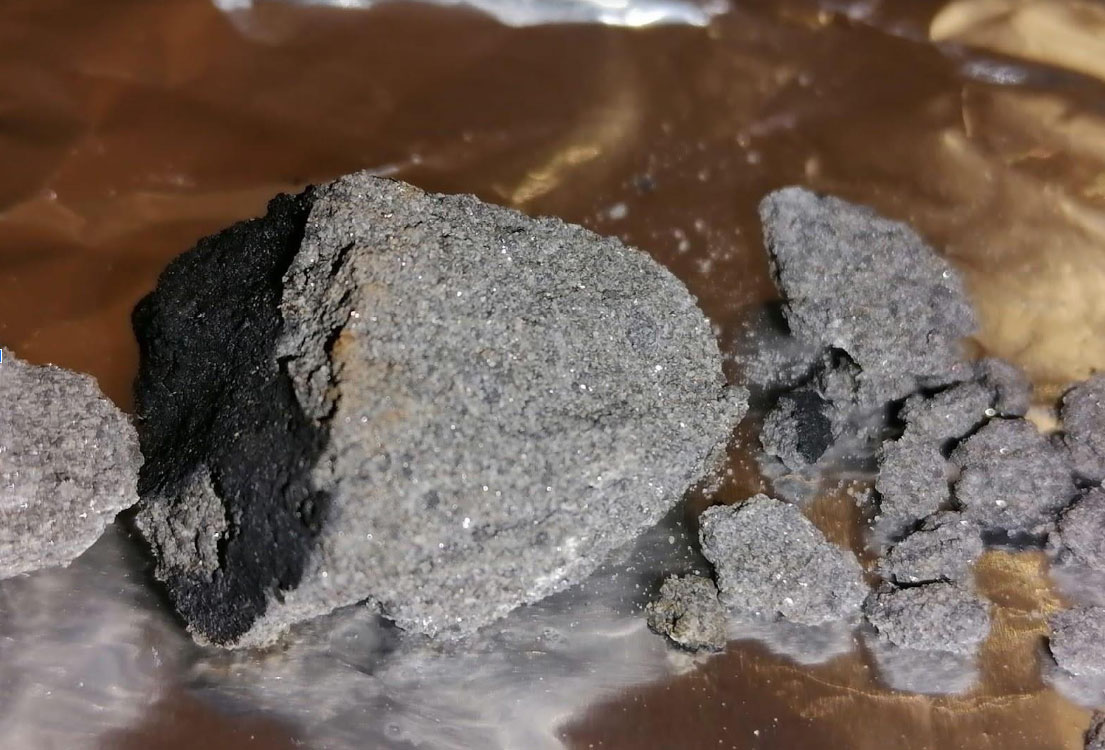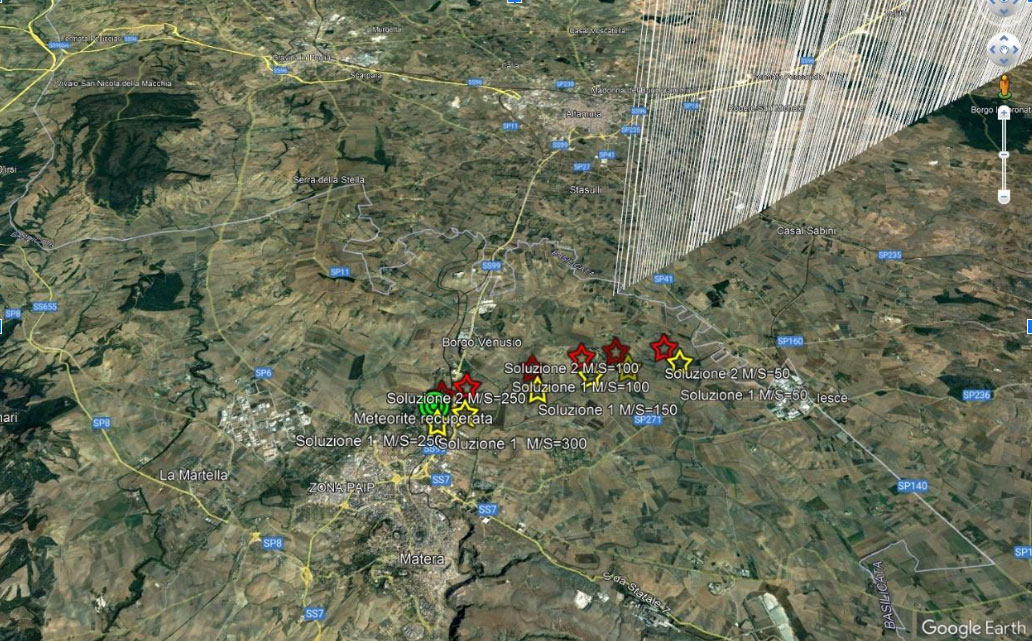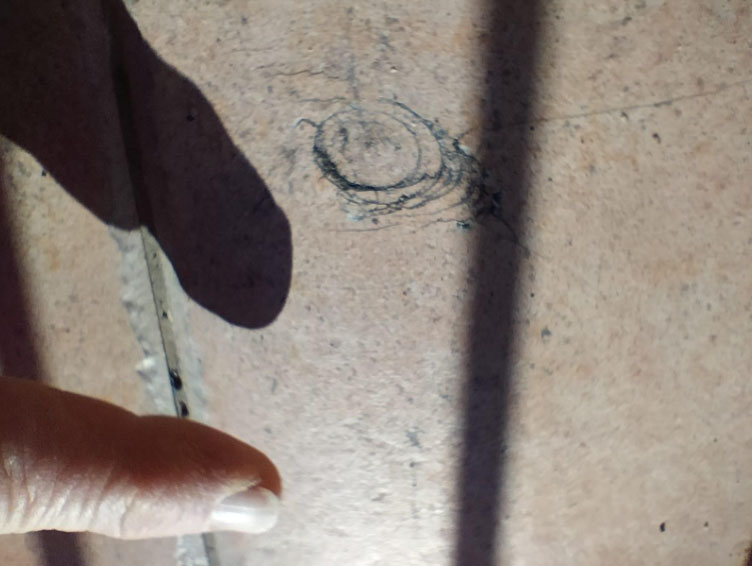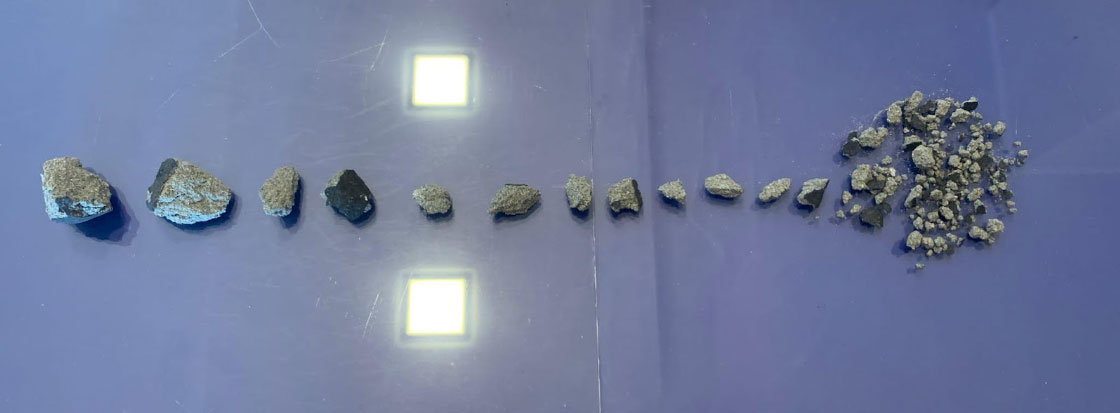The fireball observed by Prisma’s network in the early evening of February 14 led to the fall of a meteorite on a balcony north of Matera (in southern Italy). In-depth analysis of the recovered fragments will soon start

And then there were two. After the recovery of the Cavezzo meteorite, in early January 2020, the calculations by experts of the Prisma network have obtained another success. This time a region north of Matera, in southern Italy, was indicated as the possible impact area of the Valentine’s Day meteorite.
It all started at about 19h local time on the evening of February 14: a bright bolide was seen by many observers, crossing the sky above the regions of Puglia and Basilicata, coming from the north-east. It was also recorded by three electronic “eyes” – Castellana Grotte, Tricase and Vasto – of the Prisma network, which consists of about 60 cameras distributed all over Italy.
This is a research- and citizen science-project managed by the National Institute for Astrophysics (Istituto Nazionale di Astrofisica – INAF) supported with dedication by Fondazione CRT.
By the afternoon of February 15 a strewn field, i.e. the possible area where fragments of the original body could have impacted on the ground, had been outlined on the basis of the observational data. “Search north of Matera” was the indication by Prisma experts Albino Carbognani (INAF-OAS) and Dario Barghini (INAF-OATo).

News media and the local population were immediately alerted. On the same day, brothers Gianfranco and Pino Losignore noticed some unusual debris on the balcony of their parents’ home, between Contrada Rondinelle and Contrada Serra Paducci (just north of Matera). Also, their elderly parents had heard a strong bang the previous evening, just outside the home.
At this time, about 12 main fragments and several tens of smaller fragments have been recovered, for a total mass of at least 70 grammes. According to Prisma’s calculations, the meteorite fell vertically to the ground with a velocity of about 300 km/h: hard enough to chip a tile on the balcony which surrounds the home, and a solar panel on the roof.
The fragments were collected this morning, Saturday February 18, by Dr. Carmelo Falco, a member of the Project Office of the Prisma network and INAF associate, who had immediately reached the area to coordinate the search.

Spurred by this discovery, the hunt will now continue with renewed enthusiasm, to search for other fragments that could have possibly survived passage through the atmosphere. Meanwhile, the collected material will soon be analysed in detail to determine its chemical composition, mineralogy and petrographic characteristics, useful to classify the newly discovered meteorite.

Meteorites, in fact, have survived the 4.5 billion years since the formation of the solar system almost without changing: finding one so soon after its fall, as in Matera, is a precious discovery for scientists who are trying to determine how the planets, including our Earth, were formed. The second recovery of “fresh” meteorites in just a few years is a spectacular endorsement of Prisma’s success in recuperating such important material for science.




 You saw something bright and fast? Like a huge shooting star? Report it: it may be a fireball.
You saw something bright and fast? Like a huge shooting star? Report it: it may be a fireball.  You counted meteors last night? Share your results with us!
You counted meteors last night? Share your results with us!  You took a photo of a meteor or fireball? You have a screenshot of your cam? Share it with us!
You took a photo of a meteor or fireball? You have a screenshot of your cam? Share it with us!  You caught a meteor or fireball on video? Share your video with us!
You caught a meteor or fireball on video? Share your video with us!